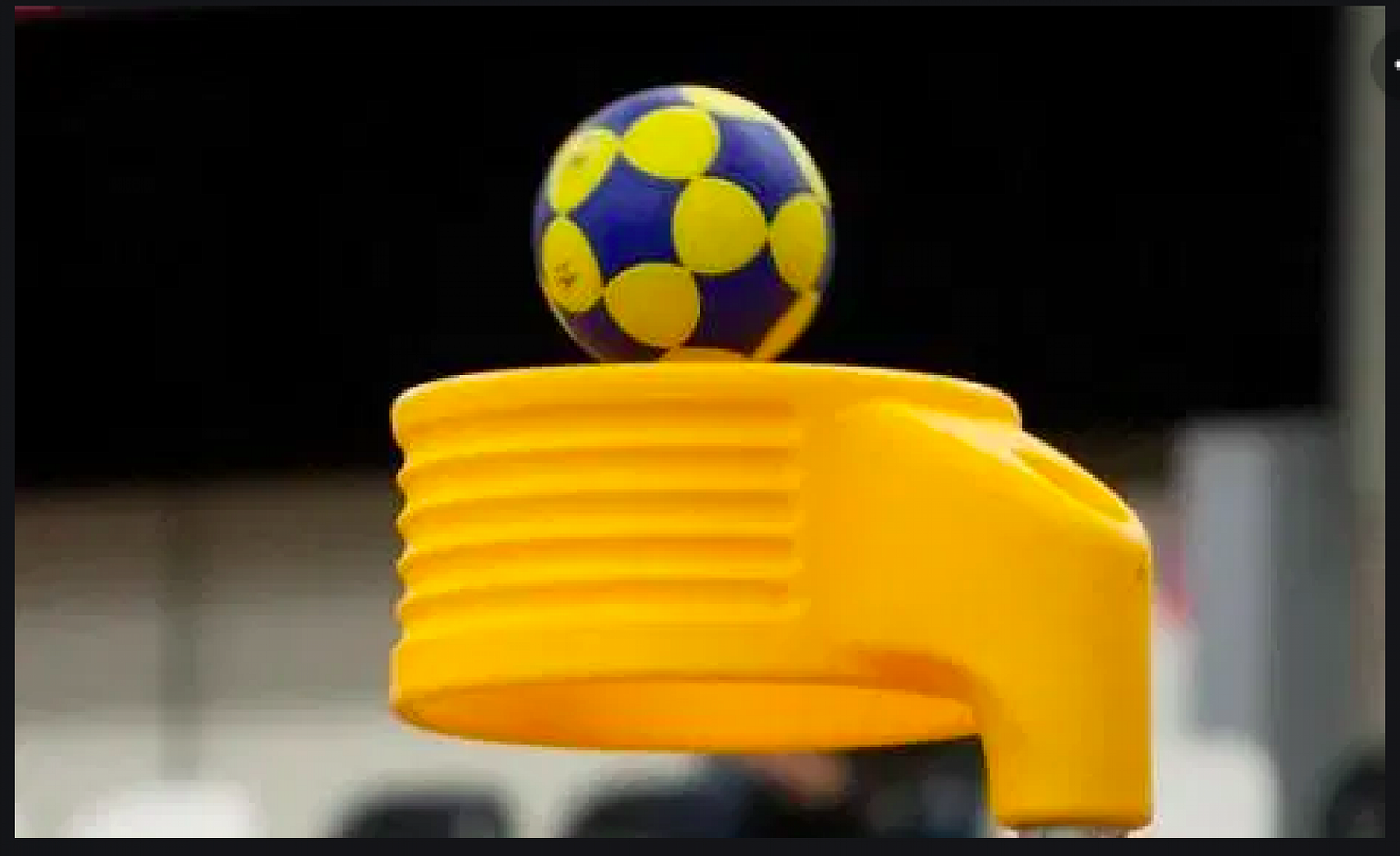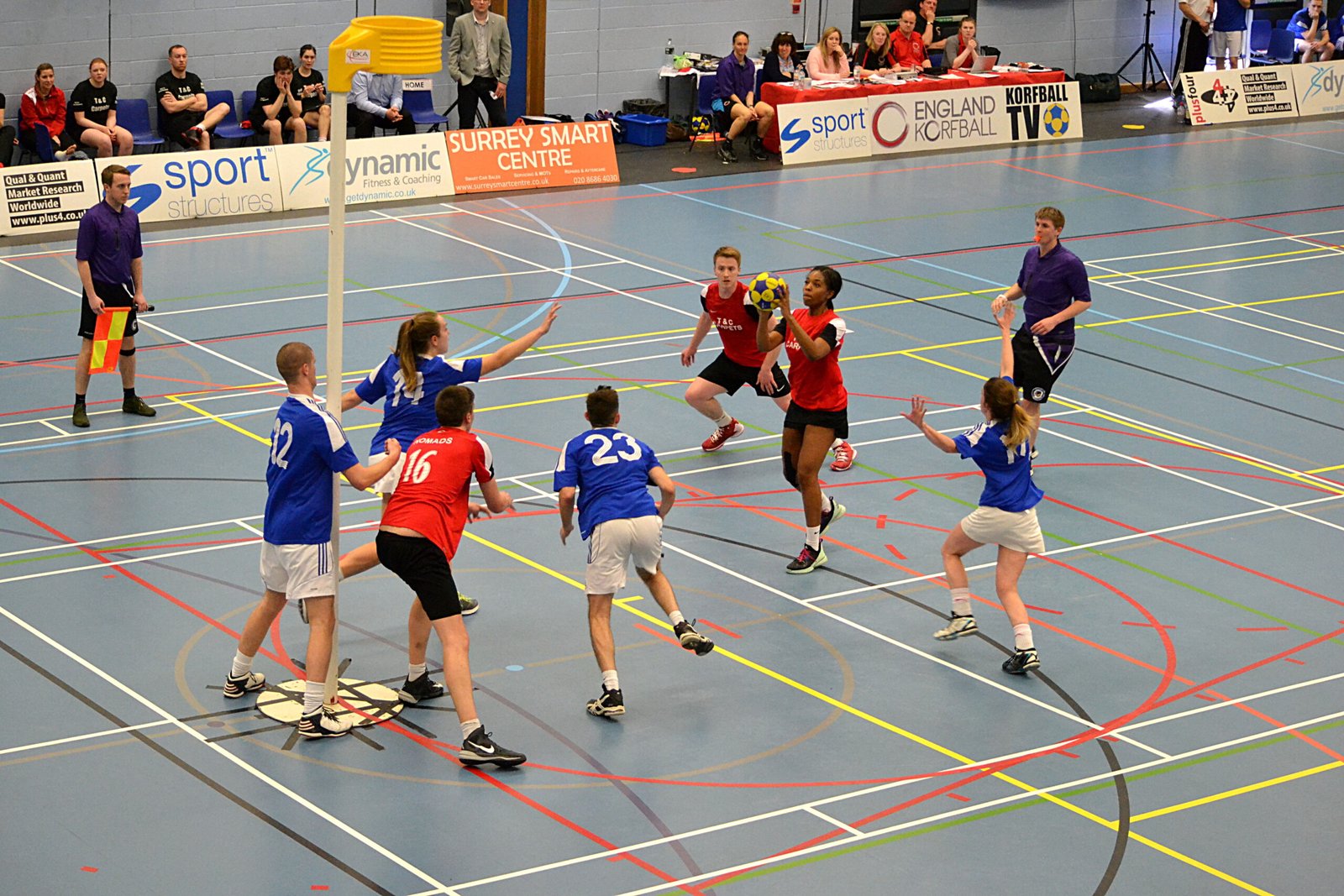Korfball is a fast-paced, mixed-gender sport that combines teamwork, strategy, and movement in a way that’s both fun and inclusive. Whether you’ve seen it played, heard about it through friends, or just stumbled upon something new, this comprehensive guide will walk you through everything you need to know to get started.
From understanding the rules and player roles to mastering basic skills, training drills, and learning the unique aspects of korfball, this is your go-to introduction to the sport.
What is Korfball?
Korfball is a unique team sport played by two teams of eight players — four men and four women — on a rectangular court. The objective is to score by throwing the ball through a high-mounted basket, known as the korf, which sits atop a 3.5-metre pole. Invented in the Netherlands in 1902 by Nico Broekhuysen, korfball emphasizes cooperation between genders and the use of strategy rather than physicality.
Today, korfball is played in over 70 countries, with active leagues across Europe, Asia, and increasingly in North America and Australia. The sport is known for its inclusivity, equal participation of men and women, and fast, skillful play.
How is Korfball Played?
Each team fields four men and four women. The court is divided into two equal zones — attacking and defending. In each zone, two men and two women from each team play, marking an opponent of the same gender.
Every two goals scored, teams switch zones — attackers become defenders, defenders become attackers. This rotation ensures all players share equal responsibilities on both sides of the court.
Unlike basketball or netball, players cannot dribble the ball. Instead, they rely on accurate passing, intelligent movement, and teamwork to create scoring opportunities.
The Court and Equipment
- Court Dimensions: Indoor courts measure 40 metres by 20 metres; outdoor courts can be larger, up to 60 by 30 metres.
- Zones: The court is divided into two zones, each team attacks one zone while defending the other.
- Korf: The basket is a metal ring fixed to a 3.5-metre high pole, without a backboard, meaning shots must be precise.
- Ball: The ball is similar in size and weight to a size 5 football or netball, designed for easy passing and shooting.
Understanding the court layout is essential for positioning and movement during play.
Basic Rules of Korfball
Mixed-Gender Marking
Each player must only mark an opponent of the same gender. This maintains fairness and equal participation for men and women.
No Dribbling
Players cannot move while holding the ball — they must pass it to teammates to progress up the court. This rule encourages team play and quick decision-making.
No Physical Contact
Korfball is a non-contact sport. Blocking, charging, holding, or any physical interference is penalised with free passes or penalties. This keeps the sport safe and accessible for all ages and skill levels.
Defended Shot Rule
A player cannot attempt a shot if their defender is:
- Between the shooter and the korf
- Within arm’s length
- Watching the shooter
- Attempting to block the shot
This rule requires attackers to find open space or use clever movement to create uncontested shooting opportunities.
Rotating Zones
After every two goals scored (combined by both teams), attackers and defenders switch zones. This means each player has to both attack and defend equally throughout the game.
Scoring
Each successful shot through the korf counts as one point. The team with the most points at the end of the match wins.
Player Roles and Positions
Korfball doesn’t assign fixed positions like football or basketball. Instead, player roles depend on whether the team is attacking or defending in the current zone.
Attack Roles
- Feeders: Usually positioned close to the korf, feeders facilitate attacks by receiving the ball and distributing it effectively to shooters. They need excellent vision and passing skills.
- Shooters: Players who create scoring opportunities by moving into space and taking shots. They require good shooting technique and timing to beat defenders and the defended shot rule.
- Collectors: Positioned slightly further out, collectors are ready to retrieve rebounds or loose balls, maintaining possession and restarting attacks quickly.
Defence Roles
- Man-Markers: Players must closely mark their assigned opponent of the same gender, denying easy passes and shots without physical contact.
- Interceptors: Skilled defenders anticipate passes, position themselves to intercept or block, and initiate counterattacks.
Flexibility is key — all players must adapt their roles depending on the flow of the game and team tactics.
Key Skills in Korfball
Passing
Effective passing keeps the ball moving and creates scoring chances. Common passes include:
- Chest Pass: Quick and direct for close range
- Bounce Pass: Useful to bypass defenders
- Overhead Pass: For longer distances or to teammates in tight spaces
Developing strong passing accuracy and timing is essential.
Shooting
Shooting in korfball requires good balance, a smooth release, and awareness of the defended shot rule. Players practice:
- Set shots: From a stationary position near the korf
- Jump shots: Adding height to avoid defenders
- Long-range shots: From outside the zone to surprise opponents
Consistent practice improves accuracy and confidence.
Dodging
Dodging is the art of losing your defender to receive the ball in open space. Popular techniques include:
- Step-around: A quick side-step to change direction
- Fake pass or shot: To mislead defenders
- Cut: A sharp run towards or away from the korf
Good dodging keeps defenders off-balance and opens passing lanes.
Rebounding
When shots miss, rebounds are critical to regain possession. Rebounding requires:
- Positioning: Anticipating shot trajectory
- Timing: Jumping at the right moment
- Aggressiveness: Going after the ball without fouling
Rebounds often lead to second-chance points.
Spatial Awareness
Korfball demands constant awareness of:
- Teammates’ positions
- Opponents’ marking
- Open spaces for passing or shooting
Players improve this through drills and match experience.
Terminology Every Beginner Should Know
- Korf: The basket where points are scored
- Feed: The player supplying passes near the korf
- Dodge: A move to shake off a defender
- Rebound: Collecting the ball after a missed shot
- Defended Shot: A shot blocked by a defender’s position
- Free Pass: Restart given after a minor foul
- Penalty Shot: Awarded after serious fouls inside the shooting area
Knowing these terms helps with understanding instructions and tactics.
Attacking Principles
Spacing
Maintaining good spacing spreads the defence and creates passing and shooting options. Players avoid clustering near the korf.
Movement
Constant movement, both with and without the ball, confuses defenders and opens gaps. Off-the-ball runs, cuts, and screen plays are vital.
Shot Selection
Choosing the right moment and position to shoot is key — attempting a shot only when not defended and with a high chance of scoring.
Defending Principles
Marking
Effective marking means staying close without contact, denying passes and making shots difficult.
Team Defence
Players must communicate constantly, switching marks if needed, and covering passing lanes together.
Pressure Without Contact
Using positioning and anticipation to pressure opponents rather than physicality keeps defence legal and effective.
Training Drills for Beginners
Passing Drills
- Partner passing: Focus on accuracy and timing at varying distances
- Passing under pressure: Add a defender to simulate game situations
Shooting Drills
- Stationary shooting: Practise set and jump shots from different angles
- Defended shooting: Simulate defended shot scenarios to improve decision-making
Movement Drills
- Dodging cones: Improve agility and footwork with obstacle courses
- Cutting drills: Practice sharp directional changes to lose defenders
Rebounding Drills
- Reaction drills: React quickly to rebounding balls launched by a coach
- Positioning practice: Work on boxing out and timing jumps
Regular practice of these skills builds solid foundations.
Common Beginner Mistakes and How to Avoid Them
- Holding the ball too long: Leads to turnovers; pass quickly
- Poor spacing: Crowding reduces passing options
- Attempting defended shots: Wait for open chances
- Lack of communication: Leads to defensive breakdowns
- Over-running the ball: Remember, no dribbling allowed
Being aware of these helps speed up improvement.
Fitness for Korfball
Korfball requires a mix of:
- Endurance: To maintain high movement throughout the match
- Agility: For quick direction changes and dodging
- Strength: To hold position without fouling
- Coordination: For precise passing and shooting
Incorporate cardio, strength training, and agility drills into your routine.
Joining a Korfball Club
Getting involved is easy:
- Search your national or regional korfball federation’s website for clubs
- Attend beginner or open sessions
- Volunteer as a scorer or referee to learn rules and flow
- Practice regularly and ask coaches for feedback
Most clubs welcome newcomers warmly and offer structured training.
Watching and Learning from Matches
Watching elite matches helps understand tactics and flow. Look for:
- How players create space
- Rotation between zones
- Passing sequences and shot selection
- Defensive positioning
Online platforms and federation websites often stream games live or provide highlights.
Common Beginner Questions
Is korfball like basketball or netball?
It shares elements with both but has unique rules like mixed-gender teams and the defended shot rule.
Do I need to be tall or athletic?
No — skill, timing, and teamwork matter more than height or raw athleticism.
How do substitutions work?
Most leagues allow rolling substitutions during stoppages, keeping the game fast-paced.
Can children play korfball?
Yes, there are junior programs designed for different age groups.
Why Play Korfball?
- Gender Equality: Mixed teams promote respect and equality
- Teamwork: Success depends on cooperation and communication
- Skill Development: Enhances passing, shooting, and spatial skills
- Fun and Inclusive: Suitable for all fitness and skill levels
Final Thoughts for Beginners
Korfball offers a fantastic introduction to team sports with a unique twist. Its emphasis on equality, strategy, and skill development makes it appealing to players of all backgrounds.
While the rules and flow may take a few sessions to master, persistence pays off. With regular practice, you’ll enjoy the fast, dynamic play and become part of a welcoming, international community.
Step onto the court, embrace the teamwork, and enjoy the challenge of korfball!



